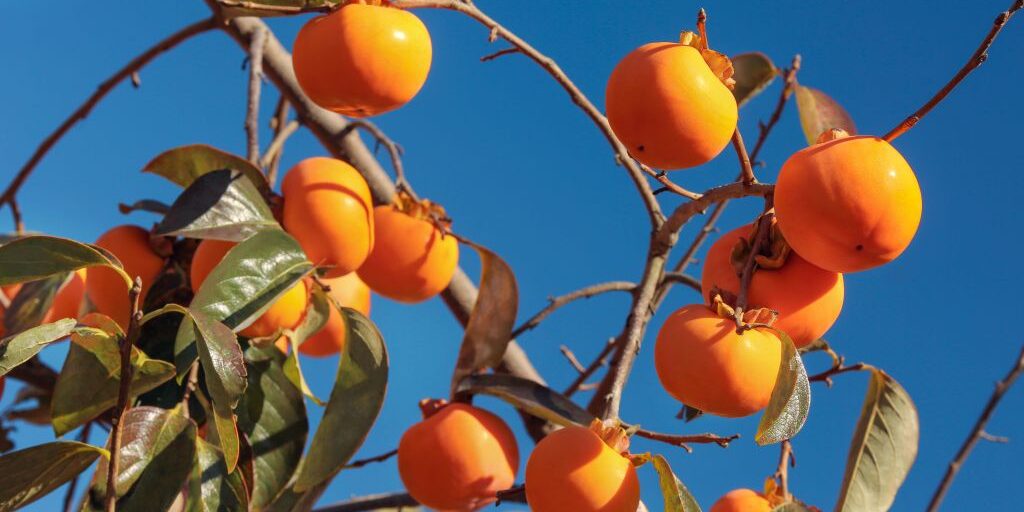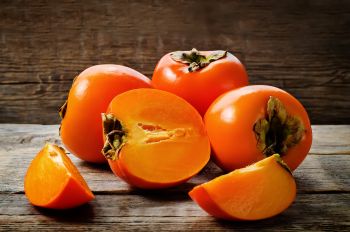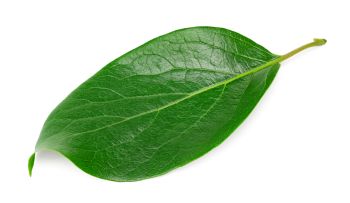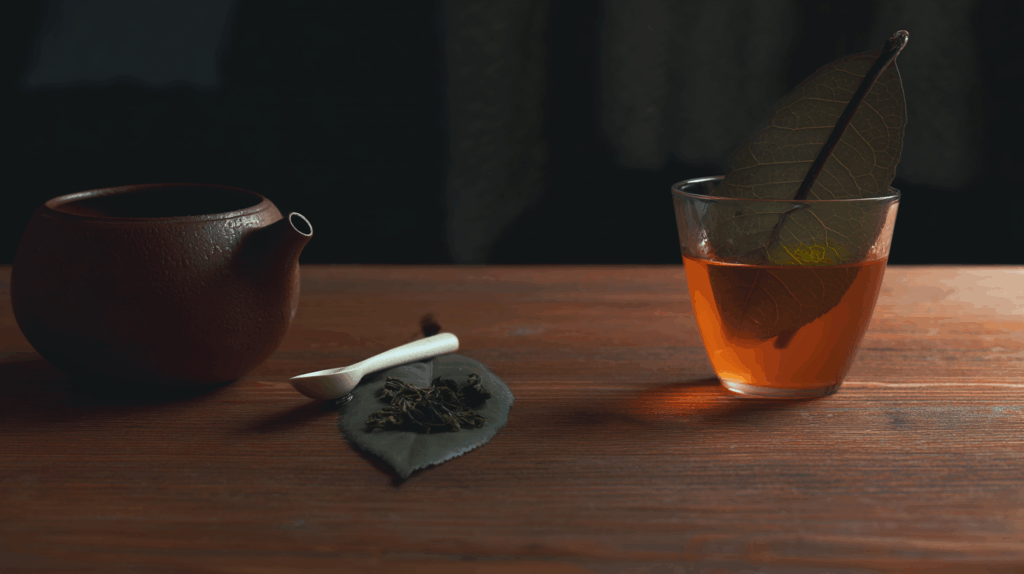
Persimmon
The persimmon tree, with its glossy green leaves and bright orange fruit, has been cherished for centuries, not just for its sweet flavor, but for its powerful medicinal and nutritional properties. Native to East Asia but now grown across the world, this often-overlooked fruit has much more to offer than meets the eye.
In this guide, we’ll cover everything you need to know about persimmons, from their health benefits to how to identify, harvest, and use both the fruit and the leaves.
What Is Persimmon?
The term “persimmon” refers to the edible fruit of several species in the genus Diospyros, most commonly Diospyros kaki (Japanese persimmon) and Diospyros virginiana (American persimmon). The name comes from the Algonquin word “putchamin,” meaning “a dry fruit.”
The tree can grow up to 60 feet tall and prefers warm, temperate climates. In the fall, the fruit ripens to a rich orange or red-orange color, and the leaves turn golden, making it a stunning addition to any garden or homestead.
Identifying Persimmon
Tree
Height: 30–60 feet (depending on the species)
Bark: Distinctive dark, blocky bark resembling alligator skin (especially in American persimmon)
Leaves: Oval, glossy, dark green; turn yellow-orange in fall
Fruit: Round or acorn-shaped; orange to red when ripe
Important Note:
Unripe persimmons are extremely astringent due to high tannin content and should not be consumed until fully soft, unless you are dealing with a non-astringent variety like Fuyu.
Health Benefits of Persimmon Fruit
 Persimmons aren’t just a seasonal treat, they’re loaded with health-promoting compounds.
Persimmons aren’t just a seasonal treat, they’re loaded with health-promoting compounds.
1. Rich in Antioxidants
Persimmons are a powerhouse of antioxidants like beta-carotene, vitamin C, and flavonoids. These help fight oxidative stress, reduce inflammation, and protect against chronic disease.
2. Supports Heart Health
Thanks to their high fiber, potassium, and antioxidant content, persimmons may help lower blood pressure, reduce bad cholesterol (LDL), and improve overall heart function.
3. Aids Digestion
Just one persimmon provides around 6 grams of dietary fiber, which supports healthy digestion and helps prevent constipation.
4. Boosts Immunity
Vitamin C and other immune-boosting nutrients make persimmons a valuable ally during cold and flu season.
5. Blood Sugar Friendly (in Moderation)
Despite their sweetness, the fiber in persimmons can help stabilize blood sugar when eaten whole and in reasonable amounts.
Health Benefits of Persimmon Leaves
 While the fruit often gets the spotlight, the leaves are just as valuable, and in some cases, even more potent.
While the fruit often gets the spotlight, the leaves are just as valuable, and in some cases, even more potent.
1. High in Vitamin C and Flavonoids
Persimmon leaves contain high levels of vitamin C, quercetin, and rutin, compounds known for their anti-inflammatory, anti-aging, and immune-supporting effects.
2. Regulates Blood Pressure
Tea made from dried persimmon leaves has been traditionally used to support healthy blood pressure and circulation.
3. Improves Skin Health
The antioxidants in persimmon leaves may protect the skin from UV damage and promote collagen production.
4. Supports Weight Management
Studies suggest persimmon leaf extract may reduce fat absorption and support healthy metabolism.
How to Use Persimmons
Eating the Fruit
Astringent varieties (like Hachiya): Eat only when fully soft and jelly-like.
Non-astringent varieties (like Fuyu): Can be eaten while still firm, like an apple.
Persimmons can be:
Eaten fresh
Dried into sweet, chewy snacks
Baked into pies, cakes, or puddings
Blended into smoothies and sauces
Making Persimmon Leaf Tea
 Harvest fresh leaves during summer or early fall
Harvest fresh leaves during summer or early fallWash and dry them thoroughly
Cut into small pieces and dehydrate (air dry or low heat)
Steep 1–2 teaspoons of dried leaves in hot water for 5–10 minutes
Note: Persimmon leaf tea has a mild, slightly sweet flavor and is naturally caffeine-free.
How to Preserve Persimmons
Drying: Slice and dry using a dehydrator or sun-dry for natural fruit leather
Freezing: Peel and puree ripe fruit for use in baking or smoothies
Fermenting: Traditional cultures ferment persimmons into vinegar or alcohol
Canning: Make jams, jellies, or preserves
Properly stored dried persimmons can last up to a year and make excellent additions to emergency food stores.
Precautions
Unripe astringent persimmons can cause digestive issues due to high tannins.
Avoid consuming large quantities of persimmon on an empty stomach, especially the skins, which can contribute to bezoar formation (a rare blockage in the gut).
Those with low blood pressure or taking blood thinners should consult a healthcare provider before using persimmon leaf tea regularly.
Final Thoughts
Whether you’re looking to add a nutrient-rich fruit to your diet or want to explore the medicinal uses of its leaves, persimmon is a true gift from nature. It’s easy to grow, beautiful in every season, and incredibly versatile in the kitchen and the apothecary.
From its delicious fruit to its healing leaves, persimmon deserves a place in every self-sufficient herbalist’s toolkit.
Breathe Easy: How Mullein Can Help Your Lungs
The US Army’s Forgotten Food Miracle (Video)
The Truth About Cataracts and What You Can Do to Avoid Them

 Harvest fresh leaves during summer or early fall
Harvest fresh leaves during summer or early fall